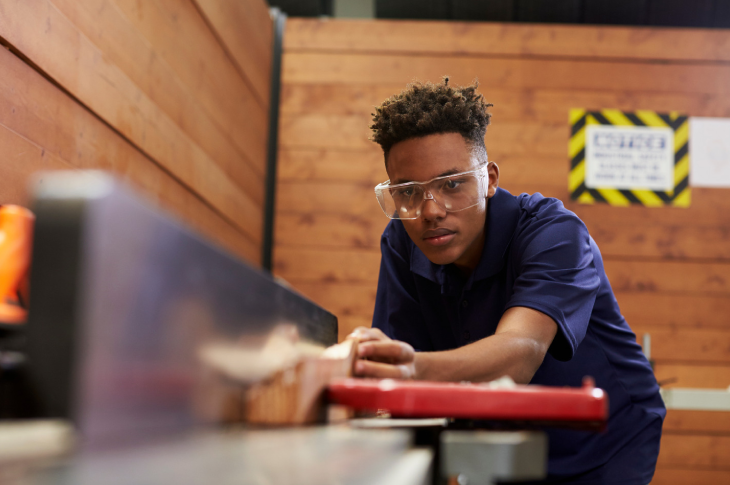Debunking 4 common myths about hiring students for work experience terms

Are you interested in supporting the next generation in your field? Are you interested in growing your business and team by seeking fresh perspectives? Or do you need an extra set of hands around the workplace to handle the day-to-day while you focus on the bigger picture?
Many SAIT students are eligible to participate in work-integrated learning (WIL) in their programs — meaning they’re heading straight into the field for a portion of their studies, where they’ll learn from employers and gain real-world experience.
But the benefits aren’t just for students. As an employer, you’ll gain a new team member with a fresh perspective and a great willingness to learn.
Employers might wonder how to get involved in SAIT’s WIL programs, and Lara Schuelke, Work Integrated Learning Specialist, is here to dispel myths and make it easy for employers and students to get the most out of these programs. The language we use for work-integrated learning varies a little by program, but for the purpose of this article, we’ll use the term “work experience” to describe practicums, internships and co-ops.
Commons myths about hosting work experience
Myth #1: I don’t have time to train a student.
Truth: SAIT students are trained in current practices in their field and can lighten your workload. By tapping into student talent, you can focus on bigger projects while they gain valuable experience.
Not only that, but, while some work experiences may last only a few weeks, the majority are four months — or longer, as in the case of many of our applied degrees and courses that offer a co-op.
Schuelke emphasizes that work experiences can also be extended if the students and employers are interested in continuing their working relationship.
“While most work experiences are built into the students’ programs, students may choose to extend their work experience instead of returning to class right away to get the very most out of their time in the field.”
Myth #2: Having a student employee is all about giving them experience — while getting little back.
Truth: While students gain a lot from their work experience, it’s also a great chance for staff to informally develop training and leadership skills — no matter their field.
“Students are adding to your work environment,” says Schuelke. “Having a student allows for leadership training for employees who are involved in supervising them, plus they bring innovation and excitement, and invigorate your current staff.”
Myth #3: I can’t afford to hire a student.
Truth: Students enter work experience understanding their value beyond a pay cheque. They’re working for a letter grade in their program and experience for their future.
Many (though not all!) student work experience terms are paid, but provincial and federal funding is available so that financing isn’t the make-or-break decision for employers when hiring students. Depending on the subsidy, you may still need to compensate the student directly, but the sum could be reduced significantly.
Funding is determined by numerous criteria, such as equitable hiring, innovative projects, technology implementation — and could amount to as much as $7,000 per student.
Schuelke adds, “If funds just aren’t available, that doesn’t mean you can’t benefit from student work experiences. You can explore having students work on a project or discuss with us if an unpaid experience is an option.”
Also, students are often aware of technology and work practices used in the industry broadly and can share that perspective to bring new ways of looking at familiar situations.
Myth #4: The only way to work with students is by onboarding them into an official position on the team.
Truth: Work experience looks different for different organizations.
“There is no one-size-fits-all solution for a work placement,” Schuelke says. She explains that, while some positions do mean students work and learn as a member of your team, there are other options if that isn’t what your business needs at this moment.
For example, many programs require students to complete capstone projects at the end of their program. If you have an issue at work that requires an innovative solution, you can pose this to SAIT for students’ consideration.
Over the course of a semester, small student groups will approach your problem or project with a solution-focused lens. At no charge at all, and with minimum time commitment on your part — only an hour a week — you can give advice, but be more “hands-off” and rely instead on the students’ innovation.
Getting started
Because all work placements look different, you’re not expected to have all the answers off the jump. “SAIT will be there to help and support you to find the best way to bring a student into your workplace,” says Schuelke. “With all of our industry partners, before the student arrives, SAIT provides resources: a how-to on what to tell them, deadline dates and how engage with the experience.”
Support is key. “We help you with the ‘how’ of it all, and all you need to do is give space for the students to experience and learn in your environment.”
If you have space on your team, a project that needs solving or interest in learning more, contact the SAIT work-integrated learning team.

Oki, Âba wathtech, Danit'ada, Tawnshi, Hello.
SAIT is located on the traditional territories of the Niitsitapi (Blackfoot) and the people of Treaty 7 which includes the Siksika, the Piikani, the Kainai, the Tsuut’ina and the Îyârhe Nakoda of Bearspaw, Chiniki and Goodstoney.
We are situated in an area the Blackfoot tribes traditionally called Moh’kinsstis, where the Bow River meets the Elbow River. We now call it the city of Calgary, which is also home to the Métis Nation of Alberta.